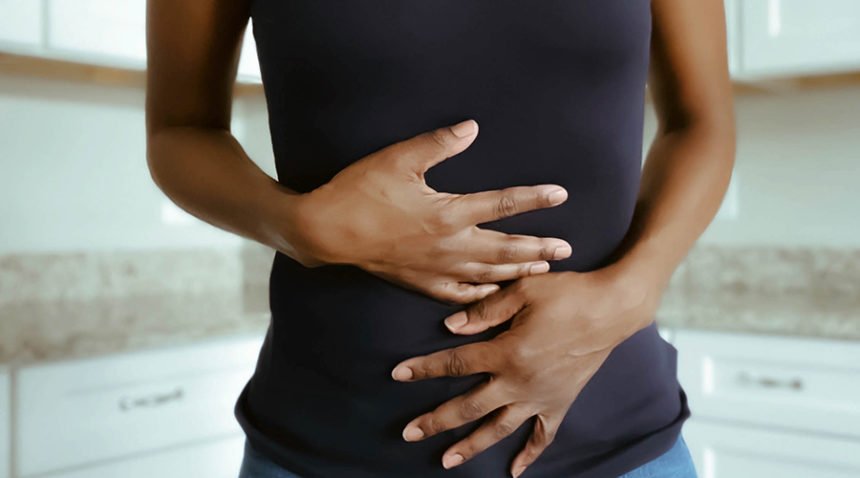It’s normal to have a stomachache every now and then. Maybe you ate something that isn’t agreeing with you or you’re having a stressful day. These run-of-the-mill pains usually resolve on their own or with basic treatment.
But if you experience daily abdominal pain, or pain that comes and goes frequently, you could have a more serious problem, such as a peptic ulcer.
UNC Rex Digestive Healthcare gastroenterologist Silpa Yalamanchili, MD, explains how peptic ulcers can develop and how to find relief.
What Are Peptic Ulcers?
A peptic ulcer is a sore in the wall of the gastrointestinal (GI) tract caused by stomach acid. Peptic ulcers typically result from inflammation caused by infection with a bacterium called Helicobacter pylori (H. pylori) or medicines, such as nonsteroidal anti-inflammatory drugs (NSAIDs).
Peptic ulcers can form in the stomach (gastric ulcer) or the duodenum, the first part of the small intestine.
The stomach produces acid, but its walls are typically coated with a layer of mucus that protects them from erosion. However, “those medicines or an H. pylori infection can impair the mucus barrier of protection in the stomach,” Dr. Yalamanchili says. “This can eventually lead to a sore developing in the lining of the stomach or duodenum. It’s not uncommon for gastric and duodenal ulcers to occur at the same time.”
Symptoms of Peptic Ulcers
Not all peptic ulcers cause symptoms, but the most common one is upper abdominal pain or discomfort. People with peptic ulcers can feel this gnawing or burning pain just below the rib cage.
“About 70 percent of ulcers are asymptomatic, or silent,” Dr. Yalamanchili says. Older patients are more likely to have vague symptoms or none at all. If there is pain, the timing of its development in relation to eating can offer clues about where the ulcer is located.
“With a stomach ulcer, eating worsens pain by inducing acid production in the stomach. Pain may be felt within 15 minutes to half an hour,” Dr. Yalamanchili says.
“For duodenal ulcers, eating may provide temporary relief of pain due to the buffering effect of food in the GI tract, so the pain occurs later, usually two to three hours after eating or during the night,” she says.
Other symptoms of peptic ulcers include bloating, nausea, a feeling of fullness, weight loss or bleeding.
Causes of Peptic Ulcers
H. pylori causes “90 percent of duodenum ulcers and 70 to 90 percent of stomach or gastric ulcers,” Dr. Yalamanchili says. “H. pylori is the most common chronic bacterial infection in humans, and most people don’t even know that they have it.”
People are often infected with H. pylori in childhood. It is spread through person-to-person contact and through contaminated food or water. Poor hygiene can be a risk factor for contracting H. pylori.
The other major cause of peptic ulcers is taking NSAIDs long term. These medicines help reduce pain, fever and inflammation.
“NSAIDs prevent the production of prostaglandin, which is a natural chemical that protects the stomach and duodenum from acid damage. They can also impair blood clotting, which is important in preventing ulcer bleeding,” Dr. Yalamanchili says.
Common NSAID brands include Aspirin, Aleve, Advil, Motrin, Excedrin, Alka-Seltzer (which contains aspirin), Goody’s Powder and BC Powder.
Tylenol (acetaminophen) is not an NSAID, so it is a good choice for people prone to ulcers.
Contrary to popular belief, ulcers are not caused by stress or worry. They’re also not caused by drinking coffee, eating spicy food or consuming a rich diet.
Smoking and drinking alcohol may increase a person’s risk for developing an ulcer, and men are more likely to have ulcers—and complications from those ulcers—than women.
Complications of Peptic Ulcers
Sometimes ulcers can erode into blood vessels and cause bleeding, the most severe complication.
“This bleeding can manifest when patients pass melena—black, sticky, tarry-appearing stools—or they might vomit red or coffee ground-appearing contents. This bleeding can be slow or rapid, (the latter of) which can be life-threatening,” Dr. Yalamanchili says.
Rarely, an ulcer causes so much inflammation that it creates a hole in the GI tract. This perforation can be life-threatening and require surgical intervention.
When an ulcer forms at the passageway between the stomach and small intestine, it can cause inflammation that blocks food or liquid from passing through into the stomach, called a gastric outlet obstruction.
Diagnosis and Treatment of a Peptic Ulcer
If your doctor suspects a peptic ulcer, he or she will order an upper endoscopy. During this procedure, a gastroenterologist passes a thin, flexible tube (endoscope) through the mouth and into the stomach and small bowel. A tiny camera allows the doctor to see the GI tract from within.
“If that ulcer is actively bleeding or has high-risk features of bleeding, then treatments can be applied through the endoscope to stop the bleeding,” Dr. Yalamanchili says. These treatments include clips that clamp bleeding blood vessels, cautery devices to burn the bleeding blood vessel shut, injectable medicines to slow bleeding and sprays that induce clotting.
Ulcers caused by H. pylori are typically treated with antibiotics, drugs called proton pump inhibitors and over-the-counter medicines such as Pepto Bismol.
When NSAIDs are causing the ulcer, patients are told to discontinue the drugs. If they can’t discontinue these medications for medical reasons, a doctor can prescribe a special acid-reducing medication in combination with the NSAID to lower the risk of bleeding.
If you are experiencing the symptoms of a peptic ulcer, contact your doctor. If you don’t have one, you can find one here.

